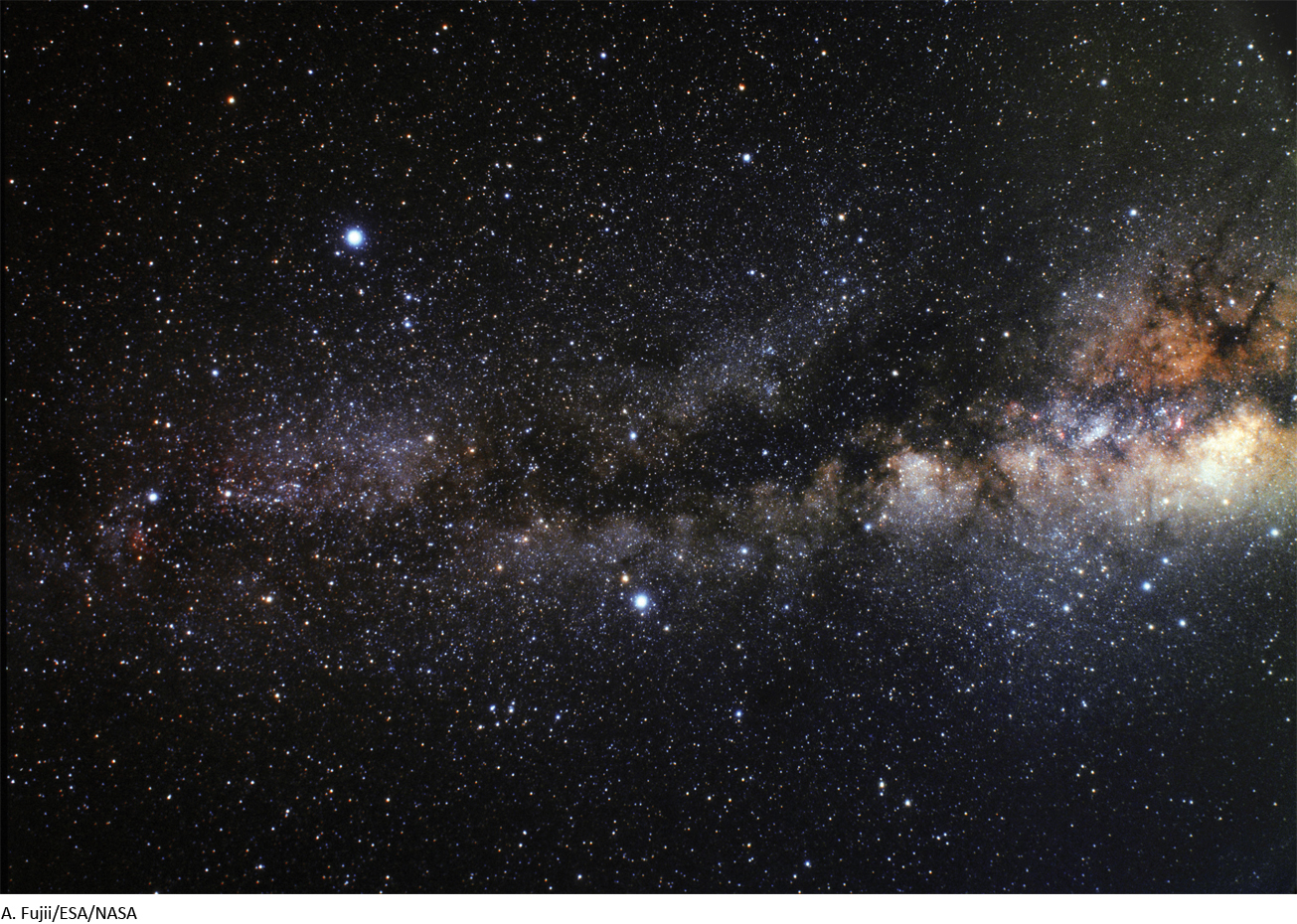1

Predicting the Motions of the Stars, Sun, and Moon
CHAPTER LEARNING OBJECTIVES
By reading the sections of this chapter, you will learn:
- 1-1 Astronomy is both an ancient cultural practice and a cutting-edge science
- 1-2 The stars are grouped by constellations
- 1-3 All of the observed celestial motions can be described if our planet Earth spins once each day while it orbits around our Sun each year
- 1-4 The Sun appears to change position over the day and throughout the year, and these changes result in Earth’s seasons
- 1-5 The Moon appears to change its position in the sky every hour and its phase throughout each month
- 1-6 Eclipses occur only when the Sun, Moon, and Earth are perfectly aligned
2
Imagine yourself in the desert on a clear, dark, moonless night, far from the glare of city lights. As you gaze upward, you see a panorama that no poet’s words can truly describe and that no artist’s brush could truly capture. Literally thousands of stars are scattered from horizon to horizon, many of them grouped into a luminous band called the Milky Way (which extends across the middle of the photograph on the previous page). As you watch, the entire spectacle swings slowly overhead from east to west as the night progresses.
For thousands of years people have looked up at the heavens and contemplated the universe. Like our ancestors, we find our thoughts turning to profound questions as we gaze at the stars. How was the universe created? Where did Earth, the Moon, and the Sun come from? What are the planets and stars made of? And how do we fit in? What is our place in the cosmic scope of space and time?
Wondering about the universe is a key part of what makes us human. Our curiosity, our desire to explore and discover, and, most important, our ability to reason about what we have discovered are qualities that distinguish us from other animals. The study of the stars transcends all boundaries of culture, geography, and politics. In a literal sense, astronomy is a universal subject—its subject is the entire universe.
In this chapter, we describe how astronomers predict the motions of the stars, Sun, and Moon as they move across the sky. What we will discover is that these apparent motions are due to a spinning Earth against the backdrop of our Sun, Moon, and the distant stars. Understanding why we see what we see is the first step in exploring our dynamic universe.